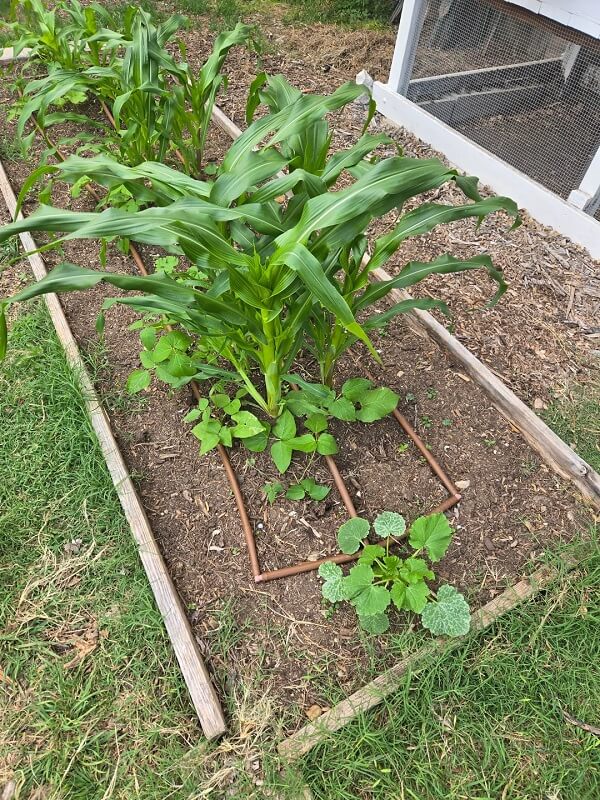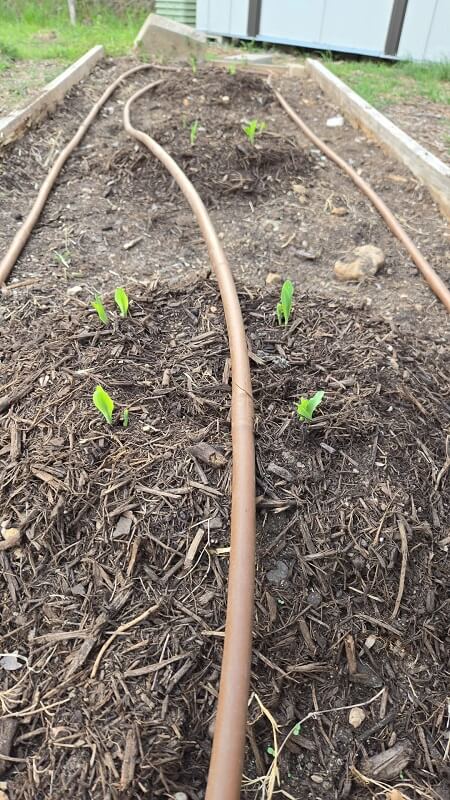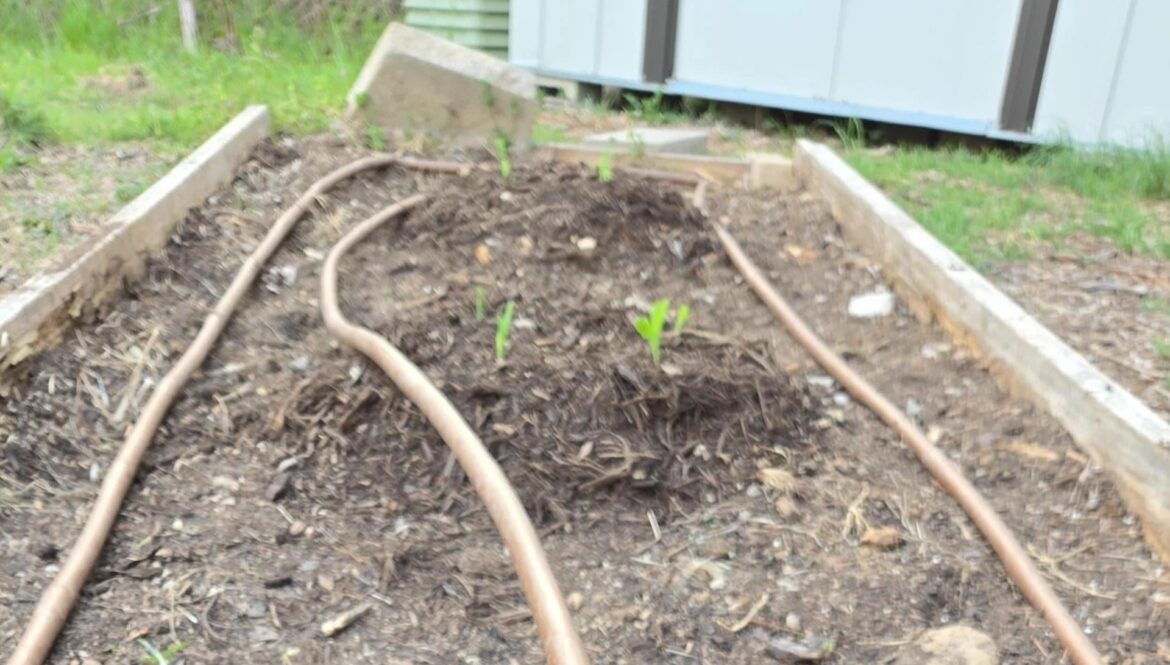Instead of spraying your soil with harsh pest-repellent chemicals, pairing different herbs and vegetables together within your garden can help keep the critters away and encourage plant growth overall.
While the companion planting technique is ancient, its applications still hold up today. In fact, one Reddit user shared their experience with the “three sisters” gardening method in the r/AustinGardening subreddit.
The scoop
This Reddit gardener’s vegetable harvest almost doubled in size over the span of a mere two weeks, thanks to this ancient Indigenous technique.
 Photo Credit: Reddit
Photo Credit: Reddit
 Photo Credit: Reddit
Photo Credit: Reddit
Planting the so-called “three sisters” vegetable trio — corn, beans, and squash — in the same bed allows the gardener to make the most of their soil, where all three species thrive upon each other in a blissful symbiosis.
According to the USDA, the corn offers structural integrity to the beans, while the beans infuse the soil with healthy nitrogen. The squash provides ground cover that secures moisture and minimizes weeds.
To cultivate your own three sisters garden, plant your corn first, then your beans, and your squash last, using nutrient-rich soil for added nourishment.

Want to go solar but not sure who to trust? EnergySage has your back with free and transparent quotes from fully vetted providers that can help you save as much as $10k on installation.
To get started, just answer a few questions about your home — no phone number required. Within a day or two, EnergySage will email you the best local options for your needs, and their expert advisers can help you compare quotes and pick a winner.
How it’s helping
There’s a reason that the three sisters method — among other similar techniques — has endured across centuries of ancient and modern gardening, with roots tracing back to traditional Indigenous agricultural practices, particularly associated with Native American tribes.
Companion planting draws from the unique characteristics of each involved plant species to foster a self-sustaining symbiosis that benefits all members of the garden bed ecosystem. With the three sisters, for example, all three plants are better off for having come together.
Since there are no added steps or complex equipment required for companion planting, this hack encourages gardeners of all experience levels to grow their own food and makes it especially easy to evade most pest and weed problems.
After all, applying synthetic pesticides, while a short-term solution, ultimately does more harm than good by flooding your soil and root systems with harsh toxins and eliminating friendly pollinators along with pests.
TCD Picks » Quince Spotlight
💡These best-sellers from Quince deliver affordable, sustainable luxury for all
Meanwhile, growing your food at home can ensure you reap the freshest produce at shockingly low garden maintenance costs — far less, that is, than the weekly cost of purchasing the same fruits, vegetables, and herbs at your local grocery store.
What everyone’s saying
Folks were eager to share their own experiences with companion planting techniques in the comments under the original Reddit post.
“Oh wow, I love this,” one user commented. “I read Braiding Sweetgrass and have been wanting to try this.”
“Beautiful!” wrote another. “I’m doing something similar but keeping my squash separate so I can carry out my [squash vine borer] warfare.”
Join our free newsletter for easy tips to save more and waste less, and don’t miss this cool list of easy ways to help yourself while helping the planet.


Comments are closed.